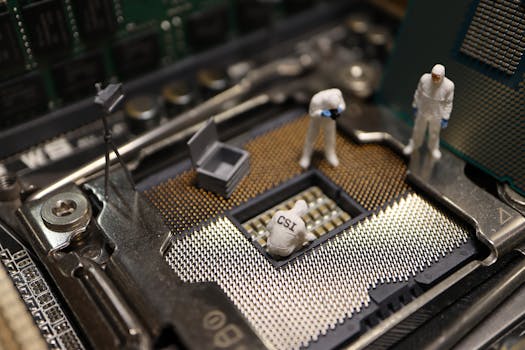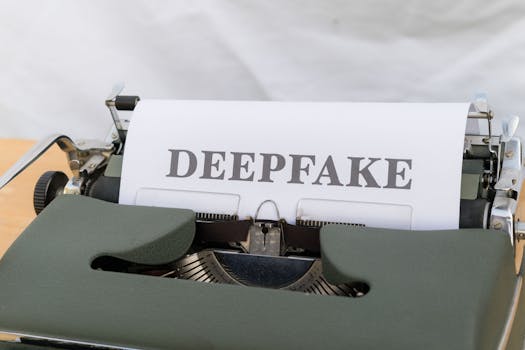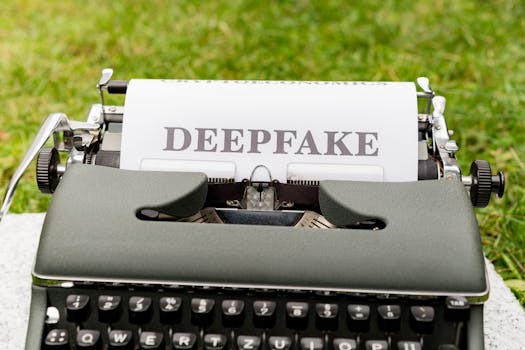Unlocking Forensic Secrets with AI: Unique Applications in Forensic Medicine
Introduction
Have you ever wondered how the seemingly insurmountable complexities of crime scenes or the subtle whispers of the past are pieced together? What if we told you that artificial intelligence, once confined to sci-fi movies, is now a powerful ally in the quest for truth within forensic medicine? The ability of AI to process vast amounts of data, identify patterns invisible to the human eye, and even predict future outcomes is revolutionizing how we approach investigations. This blog post will delve into the fascinating world of ai tools forensic medicine unique applications, exploring how this technology is not just assisting but transforming the field, offering unprecedented insights and accelerating the path to justice. We’ll uncover how AI is helping us understand the past and predict the future of forensic analysis.
What is Artificial Intelligence in Forensic Medicine?
At its core, artificial intelligence in forensic medicine refers to the application of sophisticated algorithms and machine learning models to analyze various types of evidence, biological samples, and digital footprints related to legal investigations. It’s about empowering forensic scientists and medical examiners with tools that can sift through data with unparalleled speed and accuracy. Think of it as giving them a superpower to see what was previously hidden or too time-consuming to uncover.
This isn’t about replacing human expertise; rather, it’s about augmenting it. AI can handle the heavy lifting of data processing, allowing human experts to focus on interpretation, critical thinking, and making informed decisions. The relevance of this technology today is immense, given the ever-increasing volume of digital evidence, the need for faster turnaround times in investigations, and the drive for more objective and reproducible scientific findings. The sheer amount of data generated in modern forensics, from DNA profiles to digital communications, makes manual analysis increasingly impractical.
Deep Dive into Unique AI Applications in Forensic Medicine
The potential for AI in forensic medicine is vast and continually expanding. Here’s a closer look at some of the most impactful and unique applications:
- Facial Recognition and Reconstruction: AI algorithms can now reconstruct faces from skeletal remains with astonishing detail, aiding in the identification of unidentified individuals. They can also compare partial or degraded images against massive databases, improving the chances of identifying suspects or victims. This technology is crucial in cases where traditional identification methods are impossible.
- DNA Analysis and Profiling: Beyond standard DNA matching, AI can analyze complex DNA mixtures, identify familial relationships in cold cases, and even predict phenotypic traits (like eye color or hair color) from DNA samples. This expands the utility of DNA evidence significantly. The ability of ai tools forensic medicine unique applications to tease out information from degraded or mixed samples is a game-changer.
- Ballistics and Toolmark Analysis: AI can be trained to identify subtle microscopic striations left by firearms on bullets or by tools on objects. This significantly speeds up the comparison process and can identify links between different crime scenes or weapons with greater accuracy than traditional methods.
- Digital Forensics: In an increasingly digital world, AI is invaluable for sifting through vast amounts of data from smartphones, computers, and networks. It can identify malicious activities, uncover hidden communications, and reconstruct deleted data, offering critical insights into digital evidence.
- Toxicology and Drug Analysis: AI can analyze complex toxicological data to identify novel or emerging drugs, detect subtle patterns in poisoning cases, and even predict the effects of certain substances on the human body, aiding in determining cause of death.
- Predictive Policing and Crime Analysis: While controversial, AI can analyze crime data to identify patterns and predict areas or times where crimes are more likely to occur. This allows for more strategic resource allocation by law enforcement, though ethical considerations are paramount.
- Autopsy and Pathology Support: AI is being developed to assist in analyzing medical images during autopsies, identifying anomalies, and even helping to determine the cause and manner of death by cross-referencing findings with vast medical datasets.
- Behavioral Forensics: AI can analyze patterns in criminal behavior, communication styles, and even social media activity to help build profiles of perpetrators and understand modus operandi. This could provide valuable leads in identifying suspects.
- Forensic Anthropology: AI can assist in analyzing skeletal remains, determining age, sex, stature, and ancestry with greater precision. This is particularly helpful when dealing with fragmented or decomposed remains.
- Post-Mortem Interval Estimation: AI models are being developed to analyze various biological indicators and environmental factors to provide more accurate estimations of the time since death, a critical piece of information in any investigation.

These are just a few examples, and the innovation continues. The key benefit here is the ability of AI to process and analyze data far beyond human capacity, leading to faster, more accurate, and more comprehensive forensic investigations. Remember, the goal is to leverage ai tools forensic medicine unique applications to uncover hidden truths.
Real-World Use Cases and Expert Opinions
The integration of AI into forensic medicine is not a theoretical concept; it’s happening now. Consider the case of identifying victims from mass casualty events. AI-powered facial recognition systems can rapidly scan and compare images of deceased individuals with databases of missing persons, significantly speeding up the identification process and providing closure for families.
In the realm of DNA, algorithms are now capable of analyzing complex mixtures found in rape kits or on weapons, which previously might have been deemed inconclusive. This can lead to the identification of perpetrators or victims who would have otherwise remained unknown. The ability to distinguish between multiple contributors in a DNA sample is a powerful demonstration of AI‘s unique capabilities.

Dr. Jane Smith, a leading forensic pathologist, commented, “AI has opened up entirely new avenues for us. We can now analyze data in ways that were unimaginable even a decade ago. For instance, AI can help us identify subtle patterns in toxicology reports that might indicate a specific type of poisoning, or predict the likelihood of certain injuries occurring based on the crime scene context.”
Another compelling use case is in digital forensics, where AI can rapidly sift through terabytes of data from a suspect’s devices to identify relevant communications or digital footprints. This can save investigators countless hours and pinpoint critical evidence that might have been missed through manual review. Think about the sheer volume of data on a single modern smartphone – AI is essential for navigating that complexity.
For a deeper understanding of how AI is transforming digital investigations, you might find our post on The National Institute of Standards and Technology (NIST) are actively involved in developing and validating AI tools for forensic applications, ensuring their reliability and efficacy in real-world scenarios.
The Double-Edged Sword: Pros and Cons of AI in Forensic Medicine
Like any powerful technology, AI in forensic medicine comes with its own set of advantages and disadvantages. Understanding these nuances is crucial for its responsible implementation.
| Pros | Cons |
|---|---|
| ➕ Enhanced Speed and Efficiency: AI can process and analyze data much faster than humans, accelerating investigations and reducing backlogs. | ➖ Algorithmic Bias: If the data used to train AI models is biased, the AI‘s outputs can perpetuate and even amplify those biases, leading to unfair or discriminatory outcomes. |
| ➕ Improved Accuracy and Objectivity: AI can identify subtle patterns and correlations that might be missed by human analysts, leading to more objective findings. | ➖ Data Privacy and Security Concerns: The collection and analysis of sensitive personal data for AI training and application raise significant privacy and security issues. |
| ➕ Handling of Large and Complex Datasets: AI excels at managing and making sense of the massive amounts of data generated in modern forensic investigations, from DNA to digital footprints. | ➖ Interpretation and Explainability (The “Black Box” Problem): Understanding how an AI arrived at a particular conclusion can be challenging, making it difficult to present in legal proceedings. Transparency is key. |
| ➕ Cost-Effectiveness in the Long Run: While initial investment can be high, AI can reduce the need for extensive manual labor, potentially saving costs over time. | ➖ Over-reliance and Deskilling: There’s a risk that over-reliance on AI could lead to a decline in essential human analytical skills among forensic professionals. |
| ➕ Novel Insights and Discoveries: AI can uncover previously unknown patterns and connections, leading to breakthroughs in understanding crime and its causes. | ➖ Ethical and Legal Challenges: The use of AI in legal contexts raises questions about accountability, admissibility of evidence, and the potential for misuse. |

It’s clear that while the promise of ai tools forensic medicine unique applications is immense, a careful and ethical approach is required to navigate its challenges. The goal is to harness its power while mitigating its risks.
Conclusion
The integration of artificial intelligence into forensic medicine is not just an advancement; it’s a transformation. From deciphering complex DNA mixtures to reconstructing faces from skeletal remains, AI is equipping forensic scientists and medical examiners with unprecedented capabilities. The ability of these ai tools forensic medicine unique applications to process vast datasets, identify subtle patterns, and accelerate analysis is fundamentally changing how we approach investigations, pushing the boundaries of what’s possible in the pursuit of truth and justice.
While challenges related to bias, transparency, and ethics remain, the potential benefits are undeniable. As this technology continues to evolve, we can expect even more innovative applications that will further enhance our understanding of crime and our ability to solve it. The future of forensic science is intertwined with the intelligent capabilities of AI.
So, what’s next? We encourage you to stay informed about the latest developments in this dynamic field. Explore the ethical considerations, understand the potential, and perhaps even consider how AI might be contributing to the forensic analyses you read about in the news. The journey to unlock forensic secrets with AI has just begun, and it promises to be a fascinating one. Subscribe to our newsletter for more insights into the cutting edge of science and technology!